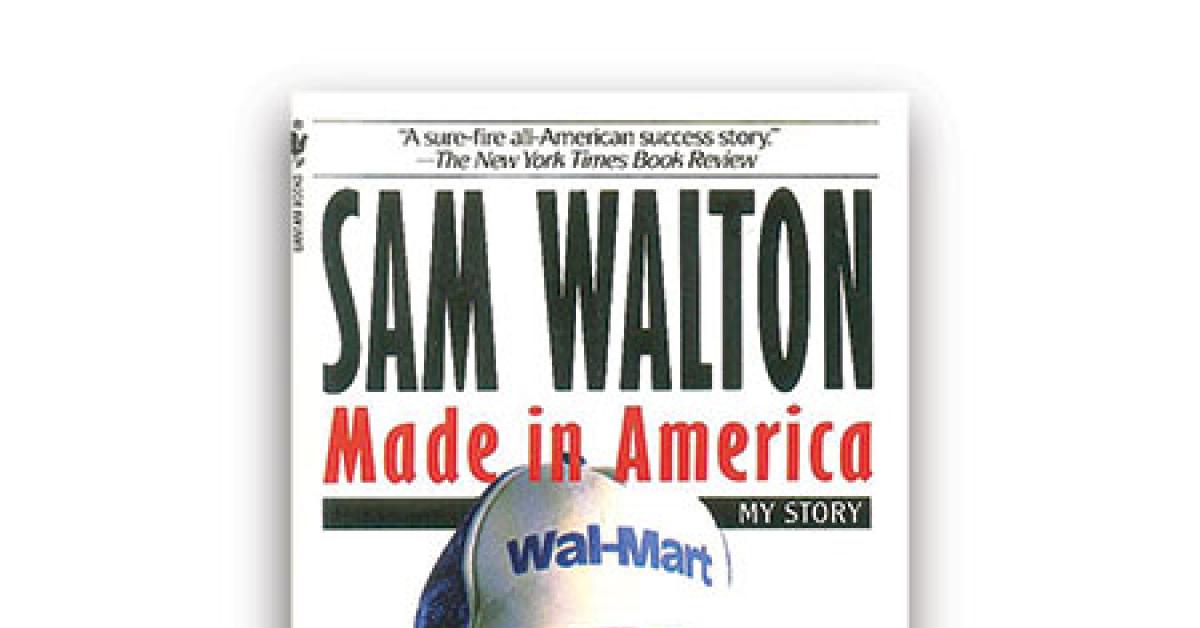PEMBROKE, Mass. — I recently read Sam Walton’s autobiography titled Sam Walton: Made in America. The book was written by the Wal-Mart founder with John Huey, then an editor for the Wall Street Journal, and came out a few months before Walton’s death in 1992.
Now, the Wal-Mart story is a familiar one, but Walton’s career offers not only examples of business success but is inspiring and uplifting. Everyone can learn from the book.
WAL-MART’S FOCUS WAS 100% PRICE
The formula never varied. In the early days, the company’s procedure was to mark up everything by 30%. In effect, the company was working on a 22% profit margin. When Walton purchased items at a super-low price, he used the same price formula—30% markup. His co-executives argued with him that he could get a higher margin, but Walton stuck with the formula—mark it up the same 30% and give the customer a super bargain.
LESSON: Know your focus and don’t deviate from it. Most likely, your focus will not be price. Rather, you are providing a service. The customer wants reliability, consistent quality, and minimum fuss rather than price, so stay focused on those matrixes. Never stop trying to improve your service. Is it possible that adding the ability to e-mail notifications of ready orders would make it easier on some of your clients? Never stop trying to provide high quality. If a cardboard insert gives a shirt body, provide it.
WALTON ALWAYS KEPT TRACK OF THE BOTTOM LINE
Those figures I listed in Part 1, he kept them in his desk and pulled them out from time to time. Now, it wasn’t a long list of figures, but rather the essential statistics. Sometimes, a few figures better describe a situation than a long column of stats. Walton looked at these figures and instantly knew how his company was doing. From them, he intuited that individual-store sales had gone from $115,000 in 1960 to $1.7 million in 1990 and that the profit percentage had risen from .08% in 1960 to 3.9% in 1990. All good improvements.
LESSON: Keep your important figures on a chart in your desk like Walton did, and examine it frequently. This chart will remind you of your progress and provide motivation to improve.
IN THE EARLY DAYS, WALTON WOULD DO ANYTHING TO DRAW ATTENTION TO HIS COMPANY
He stood outside stores in a grass hula skirt during sales. He walked through stores in costume on Halloween. He was always coming up with silly promotions with which he could be personally involved. The goal of these activities was always to call attention to Wal-Mart.
LESSON: Go out there and make a spectacle of yourself. Don’t be afraid to appear foolish in the pursuit of your business success.
WALTON NEVER STOPPED THINKING ABOUT HIS COMPANY
Yes, he played tennis, and went bird hunting, and cared for his family. But Wal-Mart was never very far from his mind. He always carried a notebook in which he’d jot down thoughts or ideas whenever they struck him. When he spoke to someone, he peppered the individual with questions (about anything having to do with the subject of Wal-Mart), and often scribbled down something he picked up from the conversation. In other words, he was always, always trying to improve his company.
LESSON: Live life, but devote yourself to your business. Even if it is not a giant like Wal-Mart, it is your baby, and it can be improved. And carry around something you can use to record your thoughts.
WALTON REWARDED WORKERS WHO PROVED THEMSELVES
These days, the conventional belief is that Wal-Mart pays minimum wage to its people and denies them health insurance, but this is inaccurate. It is true that all employees start at minimum wage (or so), but once they prove themselves, Wal-Mart rewards them with full-time jobs that includes medical insurance. All managers have salaried positions with a full benefits package, including profit sharing. Perhaps Wal-Mart’s pay scale is lower than other national retailers, but it still manages to retain help at a pretty good rate. Walton established this policy at the beginning, and it still exists today.
LESSON: Low pay is the norm in the drycleaning industry. Continue to maintain your low-wages policy for hourly employees, but give preference to trusted and loyal full-time staffers. If there are raises or bonuses to be had, give them the lion’s share. At the same time, work hard to treat all hourly employees with respect and to compensate them in other ways. For example, offer them an option to obtain a pay advance. Or lend them a vehicle if theirs is broken down. If you can’t give them adequate pay, there must be other ways to obtain their allegiance.
By putting these lessons to use, you probably won’t be one of the richest people in the world like Walton, but you’ll be a more successful dry cleaner.
Missed Part 1? You can read it HERE.
Have a question or comment? E-mail our editor Dave Davis at [email protected].


